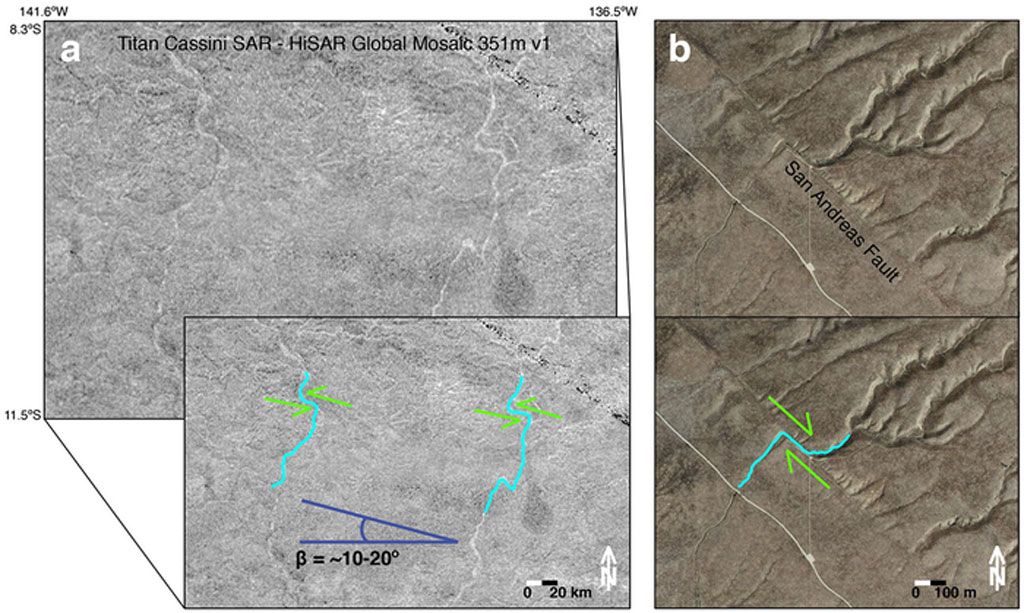
IMAGE: Possible strike-slip fault on Titan (a). Arrows indicate the possible slip direction of displacement of fluvial features. The offset for the northernmost mapped portion is about 10 km for both structures. b) Earth analogue example of a rectilinear network on the San Andreas Fault (Wallace Creek; Google Maps satellite image), which exhibits ~130 m of strike-slip offset at the trace of the fault. CREDIT: Burkhard et al. (2021)
Strike-slip faults, like that of the San Andreas on Earth, are found on Titan and likely caused by pore fluid pressures as well as tidal stress.
by Beth Johnson, Social Media Manager
From Jupiter’s moon Europa to Saturn’s moon Titan, there are curious and interesting bodies in our solar system that, while they don’t look like Earth, may share unexpected similarities. And one of those similarities is a kind of faulting we definitely see here on Earth — the strike-slip fault.
Just like the San Andreas fault here in California, strike slip faults occur when two plates push past each other, rubbing edges as they do. The edges stick — the strike part of the description — and occasionally unstick — the slip part of the description — causing medium to large quakes as they shift. We’ve found these same types of faults on icy moons like Europa and Saturn’s moon Enceladus, and now we’ve possibly found them on Titan. However, the mechanism differs between those moons.
For Europa and Enceladus, the faulting is driven by the tidal stress on the moon by its gas giant and other moons. For Titan, which is as big as Mercury, the faulting may be the result of something more — pore fluid pressures that arise from all the liquid hydrocarbons on and beneath the surface. In particular, these shear faults seem to arise near the equator.
Lead author of this new paper, published in Icarus, Liliane Burkhard notes: Our results suggest that under these conditions, shear failure is not only possible, but may be an active deformation mechanism on the surface and in the subsurface of Titan, and could potentially serve as a pathway for subsurface liquids to rise to the surface. This can potentially facilitate material transport that could affect habitability.
And now we wait for all those icy moon missions to launch, get to Jupiter and Saturn, and send back data. It’s pretty amazing to me how much we still have to learn about our solar system.
This article originally published on Medium





